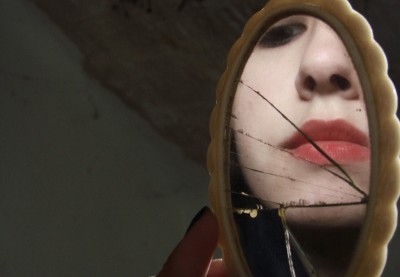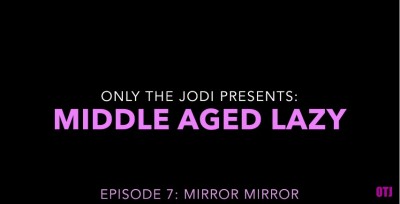 Sometimes I don’t recognize myself. I know it’s me in the mirror or the reflection in the store window—I recognize my clothes and my hair (it’s always all about the hair, I never don’t recognize my hair). But like some kind of Freaky Friday body swap, I have a face that’s not mine. Sometimes, it’s some other regular person’s face. Sometimes, it’s monstrous and lumpy and it looks like kittens and snakes fighting under my skin. Sometimes, I see it’s mine, but it doesn’t seem right. There’s a nose, two eyes, a mouth, but it just doesn’t add up to human the way other people’s faces do.
Sometimes I don’t recognize myself. I know it’s me in the mirror or the reflection in the store window—I recognize my clothes and my hair (it’s always all about the hair, I never don’t recognize my hair). But like some kind of Freaky Friday body swap, I have a face that’s not mine. Sometimes, it’s some other regular person’s face. Sometimes, it’s monstrous and lumpy and it looks like kittens and snakes fighting under my skin. Sometimes, I see it’s mine, but it doesn’t seem right. There’s a nose, two eyes, a mouth, but it just doesn’t add up to human the way other people’s faces do.
There was a time—especially during the heavy drinking and drugging days (and all drinking and drugging was heavy) when I’d be putting on makeup and I’d look at my eyes or my mouth, but not my whole face. I knew it wouldn’t look like me and it would freak me out. Luckily, those are all some-times, not most-of-the-time. Now, it’s just part of who I am.
Used to be I wouldn’t look at my whole face in the mirror because I knew it wouldn’t look like me.
It’s called depersonalization and it’s an aspect of dissociative disorder. It can last for only moments or return over and over for years. Some people say it feels like you’re watching yourself from outside your body, a third person POV. There’s a sense of emotional detachment or numbing∇. In my case, my memories play out as if I’m watching myself in a movie. I don’t remember things from my own perspective, but as viewed from the invisible camera set just outside the scene, or an audience member in the theater seat, watching my life play out on a the big screen. In other words, in my memories, I am not me. I see me.
I love taking tests, so I took this one: Steinberg Depersonalization Test. I got a 33, which put me “in the range of Severe Depersonalization (25-75).We recommend that you be evaluated by a professional…you have a treatable illness with a very good prognosis for recovery. Your illness is widely shared by others who coped with trauma by using the self-protective defense of dissociation.” Often it’s the result of severe abuse in childhood, but I’m not saying that’s what happened in my case. “Emotional abuse, in particular, is a strong predictor of depersonalization disorder in adult life.” Yeah. That sounds closer to the truth.
There was a time when leaving my body was what I needed to do to survive, and it worked.
And although I no longer have that kind of life, those kind of learned behaviors are slow to change. But, they’re not hard-wired and it happens less and less often. I know the what and why—I know it is me, even if I don’t recognize the face. Years ago my life required that kind of quick-escape survival mechanism. It worked for years. Kept me alive. Kept me sane. It was the closet I could hide in when I’d grown too old to hide in closets. And for that, I will always be grateful.
∇ Some people cut themselves when the numbing gets to be too much. For me it was tattoos and piercings, and it took me years to make the connection between what I was doing (piercing my skin with color or metal) with what I wasn’t feeling (anything).
Disclaimer: My experience by no means covers the breadth and depth of depersonalization, nor it is meant to attribute this sort of disorder to anyone else’s tattoos or piercings. Not even all of my own.
For a more light-hearted view watch OnlyTheJodi on YouTube: Middle Aged Lazy – Episode 7: Whose That Girl?
Find out more:
- http://www.minddisorders.com/Del-Fi/Depersonalization-disorder
- http://strangerinthemirror.com
- https://www.psychologytoday.com/blog/the-search-self/201411/why-depersonalization-happens
- http://www.merckmanuals.com/professional/psychiatric-disorders/dissociative-disorders/depersonalization-disorder
- http://www.medicalnewstoday.com/articles/262888.php



3 thoughts on “That Girl”